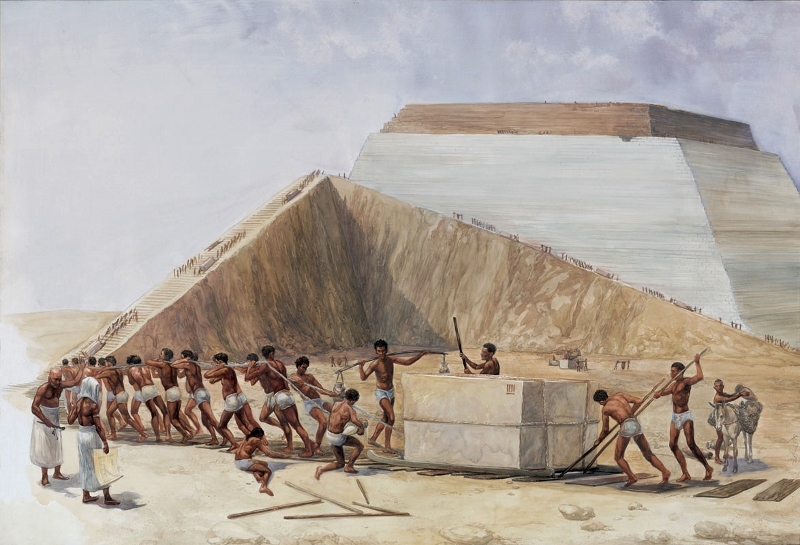New Discovery May Solve Mystery of Great Pyramid
/The Great Egyptian Pyramids are some of the most mysterious structures on earth and have been the topic of countless debates throughout history. The question of how they were built, when they were built, and who they were built by, and for what purpose they have to this day have garnered endless theories and speculations.
Here’s what we think we know:
Archaeologists believe that the Great Pyramids in Egypt were constructed by the old kingdom society around 2500 BC. They believe that the main purpose of these pyramids was to act as tombs for the pharaohs and their queens. That would make sense considering the sheer size of the pyramids. They are huge with the largest, the great pyramid of Giza incorporating around 2.3 million stone blocks, with an average weight of 2.5 to 15 tons each.
But besides what we can measure, the rest of what we think we know about the pyramids are mostly just theories. The fact is, we really don’t know for sure why the pyramids were created, we don’t know who created them, we really don’t know exactly how old they are and we for sure have NO clue how a Bronze Age society that we perceive to be primitive was able to create them.
Not only that, there are a few unbelievable facts about the dimensions of the Great Pyramid in relationship to the earth: Did you know that if you take the height of the pyramid and multiply it by 43,200 you get the polar radius of earth? Not only that, If you take the base perimeter of the pyramid and multiply it by 43,200 you get the equatorial circumference of the earth. Why 43,200? The number isn't random. It comes from a key motion of the earth called the precession of the earth’s axis. Pyramids were built and encoded with the exact dimensions of the earth at a scale of 1 :43,200.
General agreement on how the pyramids were built:
It seems that archaeologists generally agree that the granite from the pyramid’s internal chambers was somehow quarried 533 miles south of Giza in Aswan, and the limestones used as casings were from Tura a few miles away, but because these stones were so massive, everyone had varied opinions about how they were transported. Every once in a while, a new theory will come out and claim to solve the mind-boggling mystery of how the pyramids were constructed.
The last big theory was proposed in 2014 by a Dutch engineer who claimed that the stones were transported using sand, water, and a wooden sled.
New finding:
Now, according to a new British documentary called Egypt’s Great Pyramid: The New Evidence, there is apparently new evidence that two tonne blocks of limestone and granite were transported by thousands of laborers along the Nile river in wooden boats held together by ropes. Special canals were also used to bring them to an inland port which was in close proximity to the base of the Great Pyramid of Giza.
The scroll that provided evidence of such a procedure was written by an Egyptian overseer named Merer and is apparently the only first-hand account of how the great pyramid was constructed. In the papyrus scroll found in the seaport Wadi Al-Jar, it is written that Merer and his team of 40 workmen were in charge of using wooden boats along the Nile River to carry 150,000 tonnes of limestone in order to build Pharaoah Khufu's tomb in 2600BC. He explained that the boats were tied together by ropes, which helped to keep them secure.
Besides the scroll, researchers also uncovered a system of canals and a ceremonial boat, which lends truth to what Merer wrote, detailing that his team of 40 skilled workers dug canals to channel the water from the river to the pyramid.
What do you think? Did we just solve one of the greatest mysteries in the world?
Source:
http://www.newsweek.com/who-built-ancient-egypts-great-pyramid-hidden-text-holds-clues-thousand-year-670265






































































